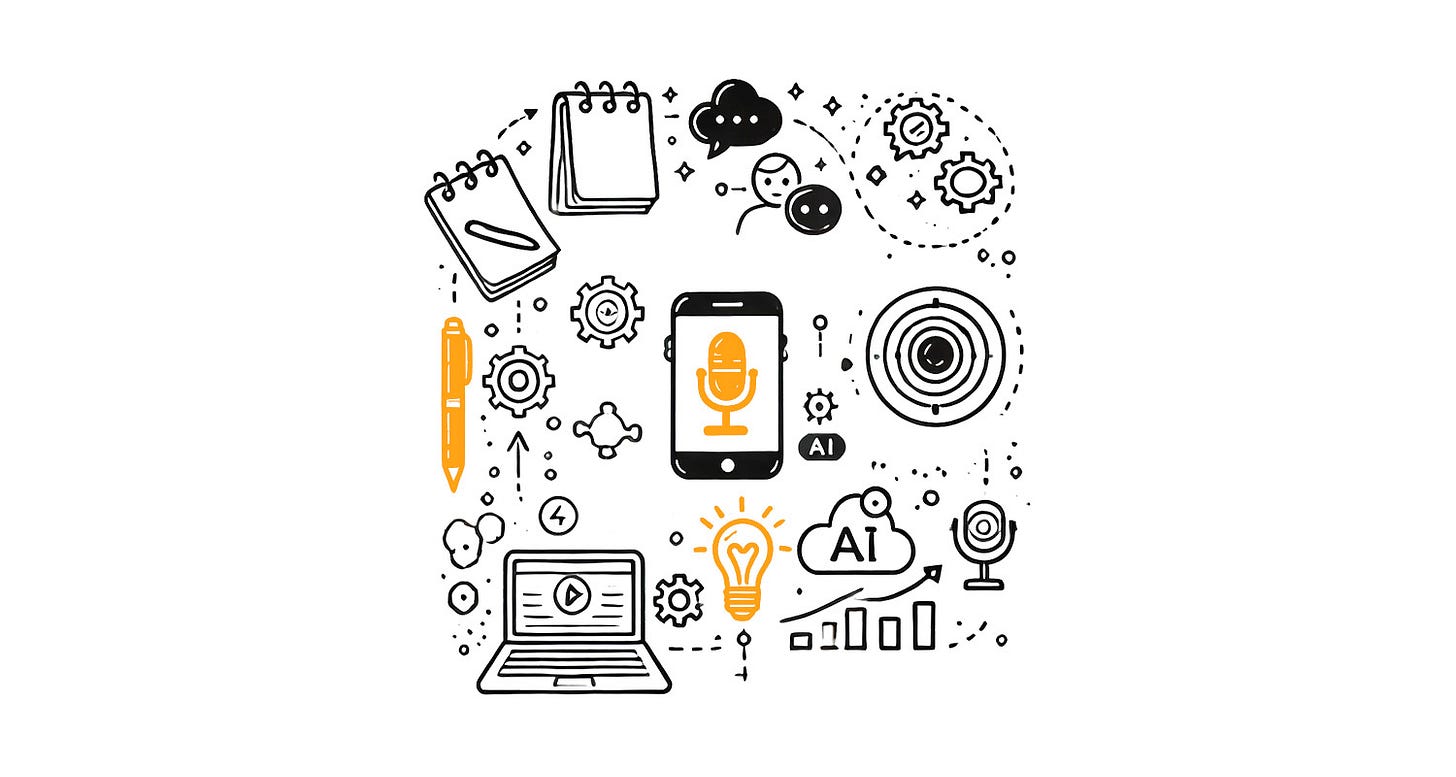The Voice-to-Content Workflow That Famous Writers Used (And You Should Too)
Learn how to create quality content faster using voice dictation and AI tools - a workflow that saves hours of work.
Hey marketer! 👋🏻
Let’s dive into a topic that everyone creating content struggles with - how to do it more efficiently and faster without draining your time and energy. Marketing today is all about content. As marketers, social media managers, or website and e-shop owners, we’re constantly creating new blog articles, website copy, newsletters, or social media posts. It’s a never-ending process.
📂 Building Your Idea Database
The truth is, few people can just sit down and produce quality content on command. But when you’re deeply engaged with your topic every day, it’s smart to continuously capture ideas as they come and save them in notes. This way, you gradually build an idea database you can tap into whenever you need a new post or article.
Great ideas often strike when we’re not writing at all - during a drive, in the shower, while talking with a client, or on a walk. If you write them down and systematically build your “idea bank,” you always have something to return to. Just open your notes and you have a starting point, instead of facing that blinking cursor with an empty mind. This could be a simple notebook or any note-taking app.
🤖 Faster Creation with Modern Tools
For me personally, the longest part has always been writing and polishing the text. Fortunately, there are tools that help with this. My proven combination looks like this:
Audiopen - This app, which can be used for free, allows me to record spoken word and transcribe it to text. Plus, it “cleans it up” a bit - things I repeat or say out of order get organized into coherent sections. When I start creating, I simply dictate my idea into my phone.
Claude - I use artificial intelligence for processing the raw text. In Claude (though ChatGPT would work fine too), I have projects (folders) set up with pre-loaded sample texts for different purposes and context - what the project is, who the texts are for, how I’ll use them, whether I’m formal or casual with readers, the tone... I input the raw text from Audiopen into Claude and have it process the full version.
Final Edits - I then transfer the created text to its final destination, where I manually review, edit, and supplement it. For web pages or blog articles, I also adjust headings, bullet points, bold text, and add links and images.
🚀 A Workflow That Saves Hours
This process truly saves me hours of work. Thanks to my idea database, I always have something to draw from, and by first dictating my thoughts and then having them processed, I get a solid foundation for my content. By the way, part of this newsletter was created exactly this way - I dictated notes into Audiopen, had them processed, and then finished everything up.
🤔 Is Using AI for Content Creation Cheating?
I sometimes encounter the opinion that using artificial intelligence to process text is somehow “cheating” or not authentic creation. Personally, I see it differently - it’s a way of processing input that comes from my own thoughts and ideas.
When we think about it, many famous writers didn’t manually create their texts from first to last sentence either. Ernest Hemingway, Mark Twain, or Fyodor Dostoyevsky often used scribes and stenographers to whom they dictated their thoughts. Dictating thoughts to someone else and subsequent editing was common practice.
Even today, many authors use assistants, editors, and other professionals who help transform their thoughts into final form. AI is just another tool in the long history of content creator’s helpers.
The key is that the ideas and thoughts are my own. I know what I want to write about, I have experience and knowledge in the field - I’m just using modern tools to streamline the creation process. I always review, edit, and add my personal perspective to the final text. So it’s more about speeding up the process than replacing the author.
👉🏻 If you create content regularly, I recommend trying this approach:
Continuously write down ideas as they come to you
Use voice recording for faster concept processing
Don’t be afraid to use artificial intelligence for initial text processing
Do final edits manually - this step is still important and irreplaceable
This workflow greatly speeds up content creation. Thanks to your idea database, you always have something to draw from, and with the combination of dictation and AI processing, you can quickly and efficiently create quality content without spending entire days working on it.
How about you? Do you have your own proven process for content creation? If so, I’d love to hear about it.
☕ Enjoying the content? Support the project!
Help me keep creating practical marketing content by buying me a coffee. Every cup fuels more articles, tips, and resources for fellow entrepreneurs like you!
Hope you enjoyed this dive into timeless marketing wisdom! See you in the next article.
Jan Barborik
P.S.: If you enjoyed this article, forward it to a friend.
If you're that sexy friend, subscribe here.





It's interesting how you streamline idea capture, but I'm curious if Audiopens AI transcription handles complex technical concepts as flawlessly as creative narratives.